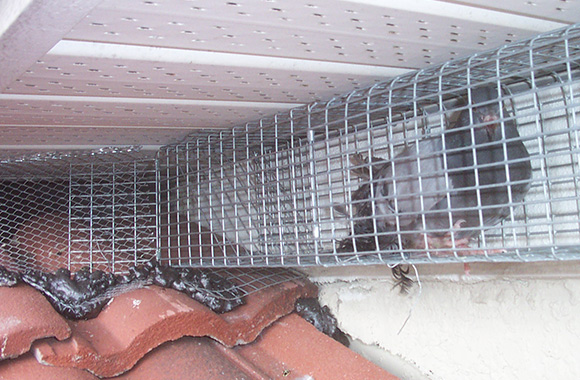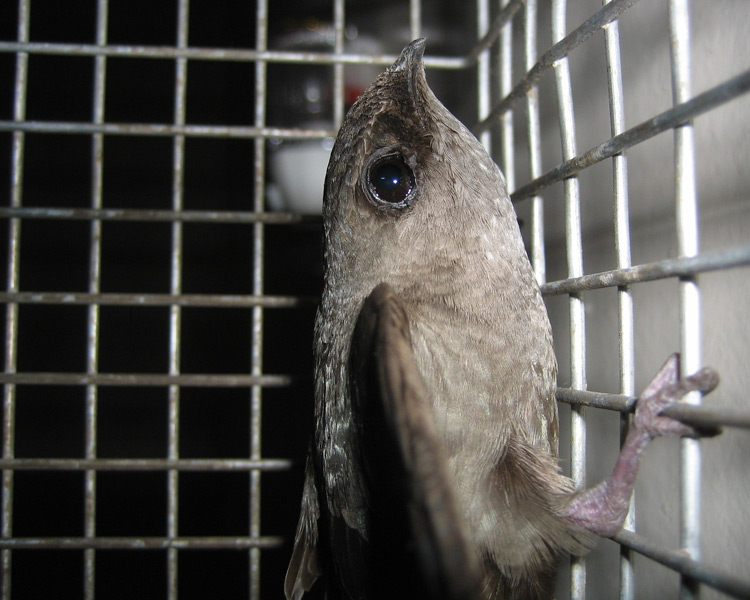Should you ever trap a bird in a cage?
So, a bird got into your home one day and you decided that you would take action to trap the animal. You went out and got a special trap, set some bait up in the trap, and then left for a little while waiting to see if the bird would go after the bait. Fortunately, that is exactly what it did. It went for that bait hook, line, and sinker. You have your bird trap once and for all. Now your question is what to do with it?


You spent this time and expense to capture this animal, most likely because you did not want to harm it in any way. You simply didn’t want it in your home, which is completely understandable. No one wants one of these birds in their home, especially a wild species like this. Birds carry a wide number of diseases and parasites, and that is never a safe thing to have in your house. Taking action to get rid of the animal is the only sensible thing to do.
But, what to do with it now ? You decided to capture the animal, so you clearly don’t want to kill it. But what do you do with it?
For many, the option that they opt for is to drive someplace and let the animal go. They drive 10 or 15 miles away, open up the cage, and let the animal out. They think that because they are so far away from their home that they have no concerns about the bird attempting to return. This may even seem like a perfectly logical response for most people to think in this way. While this may seem like the perfect solution to safely and discreetly letting the bird go, the truth of the matter is that birds have an incredible instinct about them that enables them to be able to return to their previous location.
Think about the stories of the homing pigeon for a moment. Back in World War II, these birds were used to deliver messages for hundreds of miles by Allied forces. The reason that they were so successful in being able to deliver these messages is because it was a natural instinct in the birds that enabled them to know exactly where their destination should be. There were many instances where the birds were blown off course by whether or other natural elements, had been forced to shift their pathway because of the conditions of the war, or had been moved and set free from a different location; yet, they still found their way back to the destination they were searching for. It was a truly remarkable feat what these animals were able to do.
This is why take the animals in the cave and let them go at some other location you can pretty much be sure they will still return to your home. There is a sense of where your house is and they are able to relocate to that place once again. Your best efforts to capture the animal in an attempt to be as humane as possible may be foiled by the birds’ natural ability to find its original destination again. This is why relocation is simply not an option in less the choice that is made is done with special kind of training. The likelihood is that you don’t training and don’t know exactly how to assist the bird so it does not return to your home.
Sadly, you are really only left with two options to resolve this problem. The first one is to find some kind of pet shelter where you can take the animal to and let them train the animal or care for it so that it will not return to your home. There are several centers that you are likely to find within your county that offer this kind of assistance and can help you with this problem. There is some cost it is usually involved but if you were looking to find a humane solution to get rid of your bird problem, this is probably the best of these.
If you are unwilling to do this then your only other option is to terminate the animal. You may not like this at all, but the fact of the matter is that if you want to ensure that the bird does not come back to your home this is really the only option that absolutely ensures that it will not. Keep in mind that you are fighting that natural instinct. It wants to return back to where it came. Your house is where it can, so it will be attempting to get back there. You’re one way of ensuring that it will not return is to terminate the animal’s life.
Knowing what your two binary options are, this is now up to you to decide what choice you want to make to dispose of the animal. It is really completely up to you. You went through the work of capturing the, and may have even spent quite a bit of money to get the right kind of trap to make this happen. Now it is up to you to decide what the final fate of this animal be. The risk is completely up to you as to whether you feel you can trick that bird into not returning to your home.

Trapping a bird can be done and, providing you check the legalities of checking the specific species of nuisance bird you're faced with, in some cases, trapping can be used as an effective control solution. The problem with trapping, of course, is that you must then figure out what to do with the bird you have trapped.
Let’s say you manage to trap yourself a pigeon. You plan to drive somewhere, perhaps ten or so miles away, and then release the bird, letting it live a happy life back where it belongs — in the wild. There are many flaws in that plan. To start with, experts believe that pigeons can fly more than seven hundred miles in a single day, so unless you manage to drive more than seven hundred miles away, there's a high chance that the bird will be right back at your property before even you are. Not only that, trapping and releasing one pigeon only deals with one nuisance bird at a time. Pigeons come together in flocks, so it’ll likely take you a while to trap and release one pigeon at a time. It might be an effective solution for one problematic bird, but it's not the type of approach you'll want to take for more than one.
